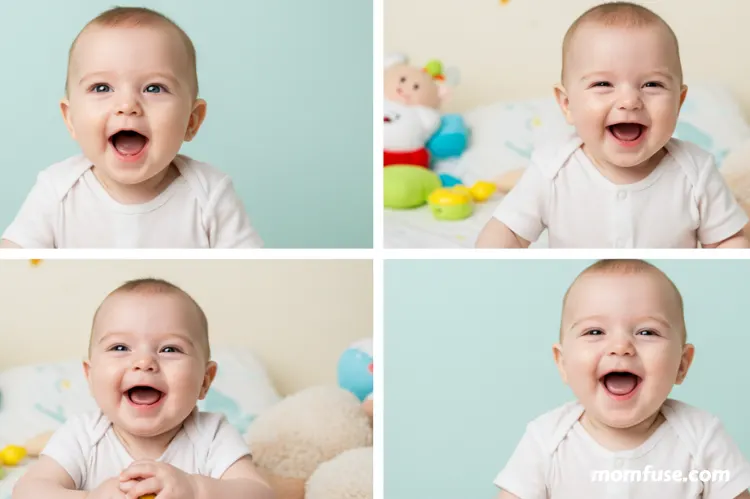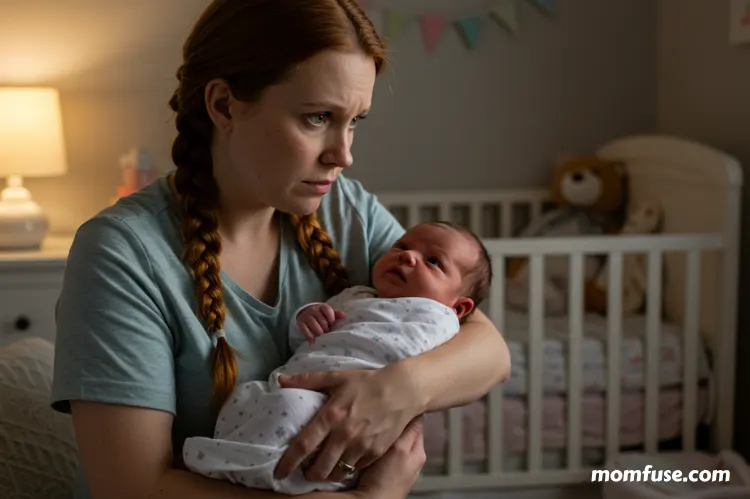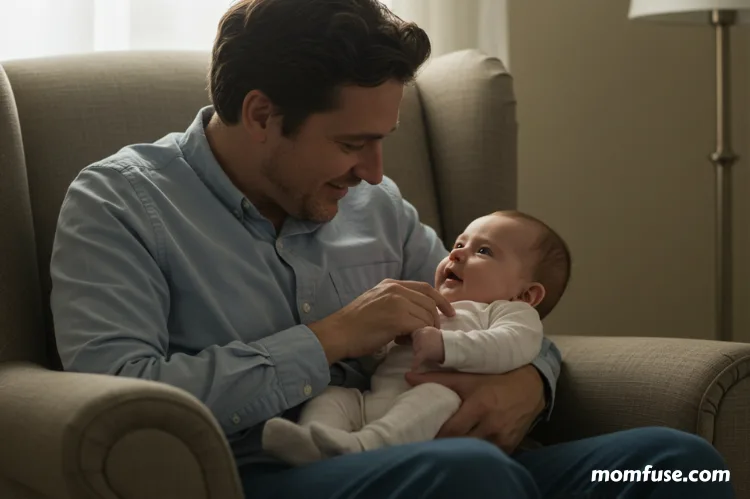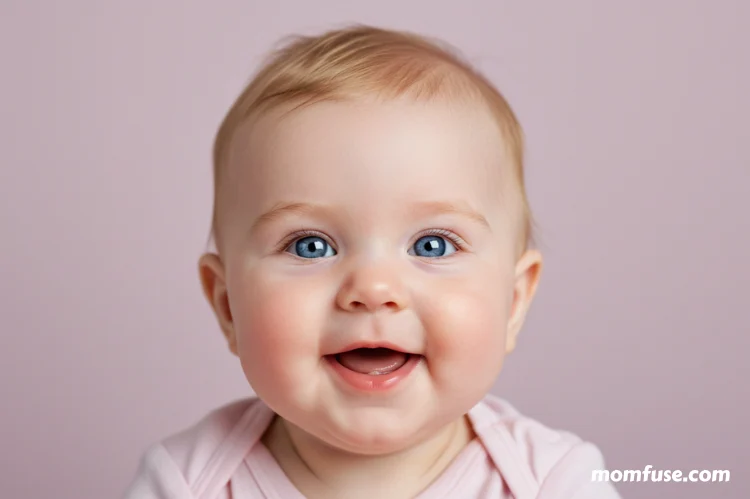From the very first moments of life, babies make noises to express their needs and emotions. While adults may hear a jumble of sounds, every cry, coo, and babble carries meaning. These early vocalizations form the foundation of communication and give parents valuable insight into what their little one needs.
By learning to interpret baby noises, caregivers can strengthen bonds, nurture development, and respond with confidence. To support a calm and soothing environment, many families also use tools like a smart light sound machine, which provides gentle sounds and soft lighting to comfort babies during rest and quiet play.
The Universal Language of Crying

Crying is the very first language babies use. It may seem stressful for parents, but crying is not just a sign of distress—it is a survival tool. A baby’s cry signals hunger, discomfort, fatigue, or the need for closeness. Even within days of birth, parents begin to notice differences in the intensity and pitch of cries.
Crying also plays an essential developmental role. Studies show that crying stimulates lung development, strengthens breathing patterns, and triggers hormonal responses in caregivers that encourage nurturing behavior. While it can be overwhelming, crying is a baby’s way of ensuring their needs are met.
Beyond the Cry: A Baby’s Other Vocalizations

Although crying is the most obvious sound, babies quickly develop other noises. These sounds are equally important because they show early experimentation with voice and communication. Common baby noises include:
- Cooing: Soft vowel-like sounds that usually appear around 6–8 weeks.
- Babbling: Repeated syllables like “ba-ba” or “da-da,” often starting around 4–6 months.
- Giggles and laughter: Social sounds that signal joy and bonding.
- Squeals and shrieks: High-pitched expressions of excitement or frustration.
These noises show that babies are learning how their vocal cords work. They experiment with pitch, tone, and volume, which later leads to speech. Parents who respond with smiles, words, or mimicked sounds encourage further vocal play and communication.
The Different Types of Cries and What They Mean

Not all cries are the same. With time, parents begin to recognize different patterns. Some common cry types include:
- Hunger cry: Rhythmic and repetitive, often escalating if not addressed.
- Tired cry: Whiny and accompanied by rubbing eyes or yawning.
- Pain cry: Sharp, sudden, and high-pitched, usually more urgent.
- Discomfort cry: Fussy and low-pitched, often linked to wet diapers or being too hot/cold.
- Attention-seeking cry: Softer and stops quickly when picked up.
By observing body language along with sounds, parents can become adept at distinguishing these cries. This understanding reduces stress for both baby and caregiver and allows quicker, more effective responses.
How Baby Noises Change with Age
Baby noises evolve as little ones grow:
- Newborn (0–2 months): Mostly crying with occasional coos.
- 2–4 months: Coos become more frequent; babies respond to voices with smiles and sounds.
- 4–6 months: Babbling begins, and babies experiment with consonant sounds.
- 6–9 months: Repeated syllables like “ma-ma” or “da-da” emerge, though not always directed at parents yet.
- 9–12 months: Babbling becomes more complex, with tone resembling real conversation. First words may appear.
This progression reflects brain growth, muscle control, and social interaction. Babies learn that sounds get attention and begin to understand cause and effect: “If I babble, Mommy talks back.”
When to Be Concerned About a Baby’s Cries

Most baby noises are normal, but certain patterns may require attention. Parents should consult a pediatrician if:
- Crying is inconsolable for long stretches.
- Cries sound weak, hoarse, or unusual compared to before.
- The baby shows difficulty breathing while crying.
- There is a sudden change in vocalizations without clear reason.
Early detection of issues such as ear infections, reflux, or developmental delays ensures timely support. It’s important to trust parental instincts—if something feels unusual about your baby’s noises, professional reassurance is always helpful.
Responding to Your Baby’s Vocal Cues

How parents respond to baby noises shapes communication development. Prompt, consistent responses teach babies that their voices matter. Here are some helpful ways to engage:
- Answer with words: Narrating your actions (“Mommy is getting your bottle”) helps babies connect sounds with meaning.
- Mirror their sounds: Repeating coos and babbles encourages turn-taking, a key foundation of conversation.
- Use touch and eye contact: Physical closeness reassures babies and enhances the bond during vocal interactions.
- Soothe with sound: Calming shushing, gentle singing, or background white noise from a smart light sound machine helps babies feel secure.
This back-and-forth interaction, often called “serve and return,” is crucial for language development and emotional growth.
The Connection Between Sounds and Development
Baby noises are not random—they reflect neurological and social development. Each stage of vocalization strengthens specific skills:
- Cooing develops control over vocal cords.
- Babbling lays the groundwork for speech.
- Laughing builds social bonds and emotional recognition.
- Crying ensures survival and strengthens communication.
Research shows that babies exposed to rich verbal environments—through conversation, singing, and storytelling—develop stronger vocabularies and language skills later in life. By responding consistently, parents create a foundation for lifelong communication.
Understanding Your Baby’s Unique Vocal Personality
Every baby has a unique way of expressing themselves. Some are naturally more vocal, filling the room with babbles and squeals, while others are quieter observers. Neither style is better—what matters is recognizing and supporting your baby’s individual communication pattern.
Over time, these early vocal personalities may even reflect future traits. A baby who constantly experiments with sounds might grow into a confident talker, while a quieter baby may excel at careful listening. Parents who tune into their baby’s noises gain insight into temperament and preferences.
Above all, responding with love and patience builds confidence. Your baby learns that their voice has power, and you learn to trust your instincts as a parent.
Final Thoughts
Baby noises may seem mysterious at first, but with time, parents begin to understand the subtle differences between cries, coos, and babbles. These sounds are not just random—they are the earliest form of communication, shaping emotional bonds and paving the way for speech. By listening closely and responding warmly, parents can transform everyday noises into meaningful conversations.
And with a soothing environment—supported by calming tools like a smart light sound machine—both parents and babies can enjoy more peaceful days and restful nights as they grow together.
Read Next: Navigating Premature Baby Care: Practical Tips & Support

